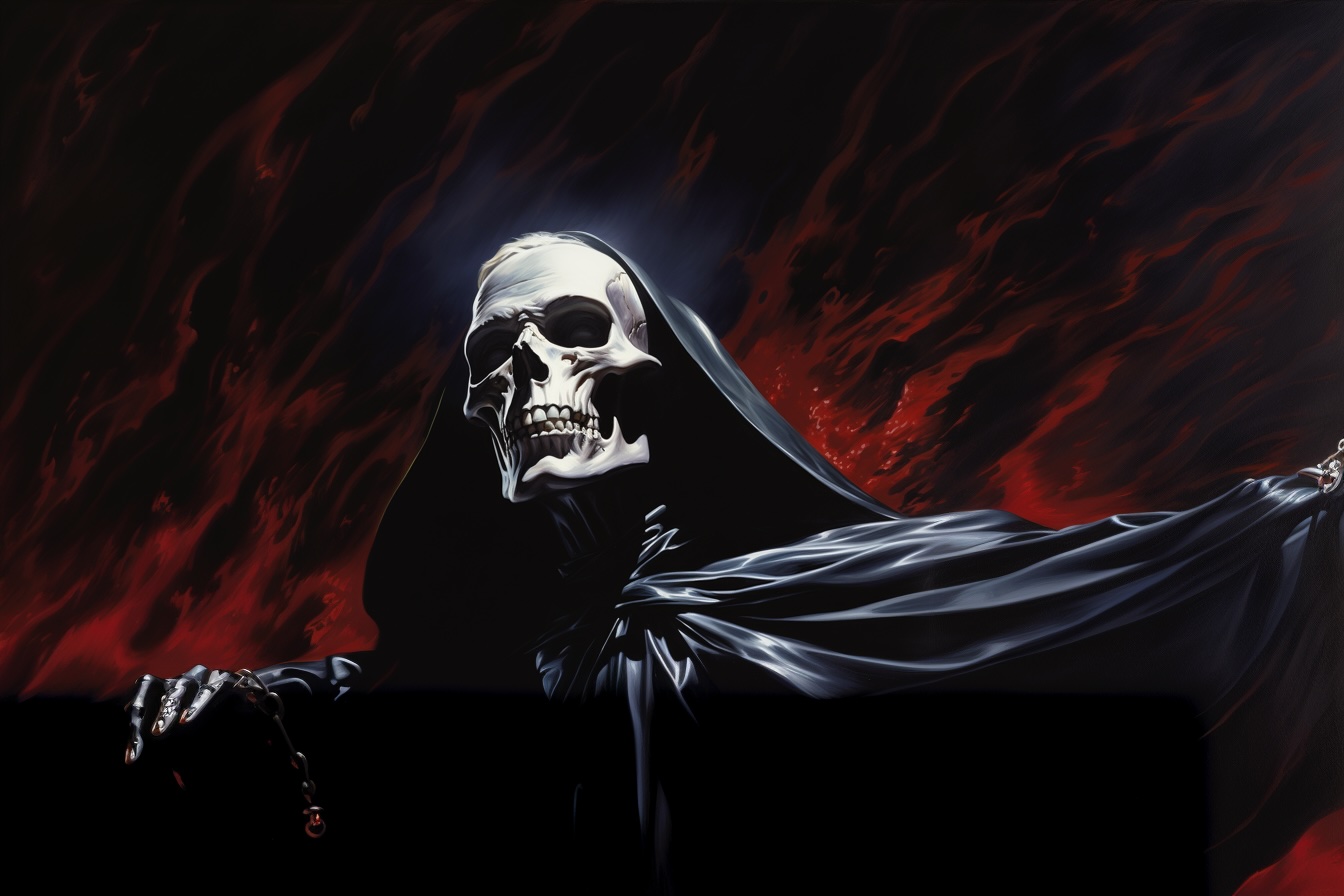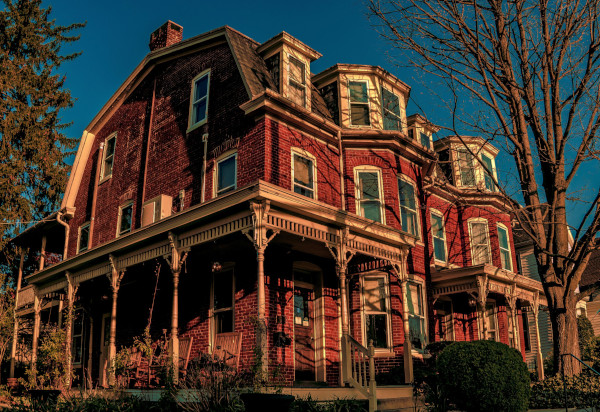Sir Geoffrey and The Headless Hound
The thin veil that separates us from the realm of the dead is lifted at various times of the year. When the sun is low, the inclinations of the mind gravitate towards the unknown, and the memories of the past come to life again.
The Fall and Winter equinoxes are when the earth opens up again, and spirits walk among us. During the ancient Norse holiday of Yule, a precursor to modern Christmas, spirits called Dregrs roamed the land, and appeasement was made to them.
These traditions continued with the Norse on to England. Ghost stories are rife in war-torn countries and abundant during the holidays, and The Ghost of Sir Geoffrey and the Headless Hound is one of the most well-known in Great Britain. The Ghost of Sir Geoffrey tells the tale of an excommunicated aristocrat who left a curse upon an Abbey he founded in Outer London.
Now, his spirit roams the woods between Hertfordshire and Middlesex, draped in a blood-red coat, every six years on Christmas Eve. He and his companion, a headless hound from the nether realm, were last seen in 1932.
This festive knight’s story is revealed in the pages below as part of US Ghost Adventures’ festive feature, “25 Days of Creepy Christmas.”
Need a gift for the lover of ghosts in your family? Give the gift of an authentic ghost tour with US Ghost Adventures!
The Earls of Essex
The spirit in question in our tale is that of Geoffrey De Mandeville, the first Earl of Essex, Sheriff of London, Essex, and Middlesex, and most intriguingly, a constable at The Tower of London. He was a cunning man who used his intellect to benefit from both sides of a civil war. The Sheriff was a free, feudal rebel fighting against a divided nation and was the Grandson of the original Geoffrey De Mandeville—a Norman Lord who was first appointed Earldom over Essex by William the Conqueror.
De Mandeville, the Elder, was one of the wealthiest Lords of the era and was well respected in medieval London, serving as the first sheriff of both London and Middlesex. After his death around 1100 AD, he left his sizable wealth to his son William De Mandeville. The younger Mandeville became the first constable of the Tower of London.
During his tenure, however, the political prisoner Ranulf Flambard escaped and was the first to do so in the tower’s history. This led King Henry I to strip Mandeville of his title and a third of his land. Some believe Mandeville helped Flambard escape, which would have appeared to work in his favor later.
Geoffrey De Mandeville, the first official Earl of Essex, retook the constable position and his family’s lost land during the rule of King Stephen. Stephen forgave his family’s debt and returned the properties to the family during a time called The Anarchy.
The Anarchy period was just that. After the death of King Henry I, the throne was disputed between rival parties, Stephen of Blois and King Henry’s daughter, Matilda. This dispute quickly resulted in a civil war in 1135. As the war raged on, Geoffrey De Mandeville used the emotions of both sides to his advantage.
After the initial rule of King Stephen began to weaken, Mandeville switched to the royal daughter’s side, gaining further riches from her. This continued till 1143 when Stephen, who’d regained power, arrested him for treason. Mandeville refused to give up his land yet again and rebelled against Stephen.
The Demise of Geoffrey De Mandeville
After his departure from the aristocracy, he spent his time terrorizing the Fenland on the Isle of Ely, using Ramsey Abbey as his main fortification. Mandeville would meet his demise in September 1144 in a small skirmish where a slight arrow wound led to the death of this once-powerful landowner.
Upon his death, it is said he placed a curse across his ten former estates. If anyone attempted to take them from his hands again, his spirit would return to terrorize the perpetrators. Mandeville was denied a proper Christian burial; instead, his body was taken to the Knight Templars Temple in London and hung from a tree in a lead casket, surely not helping his spirit lay easy.
It wasn’t until the Prior of Walden Abbey, one of his many well-endowed properties, got his ex-communication revoked that his body was properly put to rest, being lain beneath the Abbey. Walden Abbey, along with all other monasteries across England, was disbanded after the Dissolution of the Monasteries in 1541. It is believed this incited the spirit of Geoffrey De Mandeville.
This led to the start of the mysterious sightings. A headless hound accompanied by a knight draped in a red cloak began appearing across the former estates of the Earl. However, these sightings only occurred on Christmas Eve and on an infrequent basis of only six years. Most commonly, the knight was spotted in Hertfordshire and East Barnett, a large distance from where he spent his time in waking life but where he held large amounts of land.
In modern times, his property in East Barnett was excavated. The foundations of his old fortress were disturbed in the process. Hauntings began in the new building shortly after. In 1926, a small party spending the night at “The Grange,” as it was referred to, reported the sounds of hooves and spurs clanking out on the Old Church Hill Road. When they went to look, nothing was there.
Spirits of Christmas Eve
Later that evening, a groundskeeper named Mr. Gibson met the old knight. He appeared in the form of a skeleton adorned with a breastplate and black cape. Since then, he has been seen at any of his former estates every six years. 2022 marked the year of his return.
For any readers in England, this Christmas Eve may be your chance to witness his spirit. Many cultures see Christmas time as a time of spiritual prowess. When the spirits roam the earth, the veil between this life and the next is thin. This may be why Geoffrey De Mandeville returns to check on his properties every Christmas Eve. The headless hound remains a bit of a mystery to many, but one can only speculate what type of demonic presence someone as vindictive as the Earl of Essex may have met in the afterlife.
Continue with “25 Days of Christmas” and US Ghost Adventures to learn more about the spirits that walk among us on Christmas!
Sources:
https://www.britannica.com/biography/Geoffrey-de-Mandeville-1st-earl-of-Essex
https://www.hypnogoria.com/ghosts_of_christmas24.html
https://www.ranker.com/list/christmas-ghost-stories/kellie-kreiss
http://www.1066.co.nz/Mosaic%20DVD/whoswho/text/Geoffrey_de_Mandeville_1st_Earl_of_Essex[1].htm
http://www.1066.co.nz/Mosaic%20DVD/library/people/mandeville.htm
https://en.wikipedia.org/wiki/Geoffrey_de_Mandeville_(11th_century)
https://en.wikipedia.org/wiki/Dissolution_of_the_monasteries






